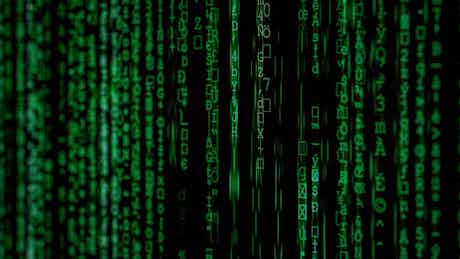What are digital driving licences?
September 13, 2022 by carwow staff

You may have heard talk of digital driving licences, but what are these, and do they exist yet?
Along with the word ‘smart’ and the letter ‘i’, ‘digital’ is one of the buzzwords of the early 21st century, being added to myriad items with the aim of making them sound modern, while also implying that they have moved from being simple items, to sophisticated, electronic ones.
Driving licences are one of the latest items to potentially come in for the ‘digital’ treatment, with digital driving licences being talked about by politicians and transport officials in recent years. But what is a digital driving licence (also known as a DDL), and are they a reality yet?
What is a digital driving licence?
The word ‘digital’ technically means something is expressed as a one or a zero, meaning it is either on or off. This is opposed to ‘analogue’, which means something can be on, off, or at any point in between (EG midway on, a quarter way off, 37.89876% on, and so on.
In common parlance, however, digital is often used to mean ‘electronic’ or ‘electronically’, and digital driving licences are essentially electronic driving licences that will, the idea goes, replace physical ones.
What this means in practice is that rather than carrying around a plastic driving licence card, you will instead have a driving licence app, or possibly an electronic simulacrum of a driving licence ‘card’ that is stored in your phone’s ‘wallet’, proving your entitlement to drive, holding any penalty points you may accrue, and to acting as proof as identification; essentially, it would fulfil exactly the same roles as a physical licence.
It would likely closely resemble the current photocard licence for the sake of familiarity, being a pink, rectangular image, and containing similar information – as well, logically, as containing a barcode, QR code or similar that officials and others could scan, should they wish to check your credentials.
Do digital driving licences exist?
Not in the UK, no. Countries including South Korea and Iceland have DDLs, though.
The UK driving licence has evolved a fair bit over recent years, with the photocard driving licence replacing old paper licences in 1997, and the paper counterpart driving licence (these coexisted with photocard licences and used to hold penalty points) being dispensed with in 2015.
Many elements of the driving licence do exist digitally – for example it is possible to get an online check code that shows car rental companies and other organisations how many penalty points you may or may not have on your licence.
Similarly, penalty points do not exist in printed form on the photocard driving licence – they exist digitally on your driving record, which is held by the Driver and Vehicle Licensing Agency (DVLA) and can be accessed by police and other authorities. The same goes for what vehicles you are qualified to drive, plus any medical conditions that may be relevant.
All that may sound like digital driving licences already exist, but while the information that is contained on a driving record is stored digitally, it does not exist in a handy, citizen-accessible format that would also exist as a proof of address and identification.
When will digital driving licences arrive in the UK?
Digital driving licences are likely to be launched in the UK at some point around 2026.
In late 2021 then Transport Secretary Grant Shapps said DDLs were coming, with the DVLA saying that before 2024 it “will introduce a digital driving licence for provisional drivers and also start to build a customer account facility”. It is therefore likely that full DDLs will come a couple of years after provisional ones have been introduced, and any teething problems ironed out.
Will physical driving licences still exist?
There is no indication that physical driving licences will stop being issued or recognised once DDLs arrive – although counterpart driving licences were once the norm before progress dispatched them – so who knows?
One impediment to a digital-only driving licence is that this would effectively require every driver to own a mobile phone – something that may be commonplace, but is by no means mandated.
How do I get a digital driving licence?
You don’t, yet. People applying for a driving licence once DDLs have been introduced will likely find themselves guided through the online process by DVLA. Assuming full licences become digital, the likelihood is this will be signposted fairly clearly at the time.
Are there any disadvantages to digital driving licences?
People who are unfamiliar or uncomfortable with smartphones might struggle with a digital driving licence, but it should be hoped that maintaining a physical licence would address this area of concern.
Perhaps a larger issue would be digital security, as the more items and information we store on our phones, the more risk there is posed to exploitation from fraudsters, and driving licences are important pieces of documentation containing names, addresses and much else – ripe pickings for those whose purposes might not be honourable in all aspects.
There could also be issues with travelling abroad in countries that do not accept digital driving licences, although as with the licence check codes that are used for renting cars and the like, it is more than within the realms of possibility that a solution to that might be found.
Change cars online with carwow
Looking for an easy way to change your car? Then carwow is the place to go. You can sell your car online for a great price, and get the best deals on a new one. All through our network of trusted dealers and all from the comfort of your home. Tap the button below to get started today.















